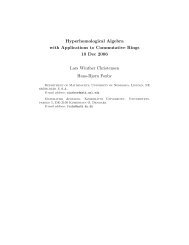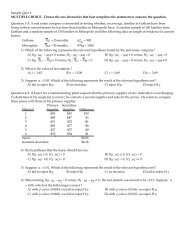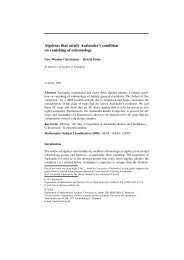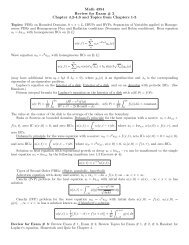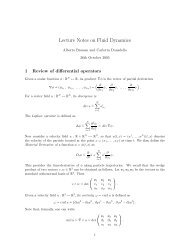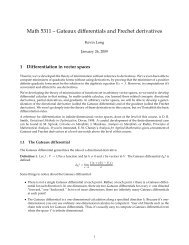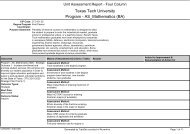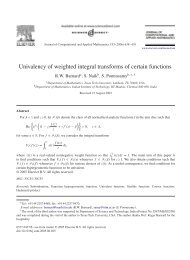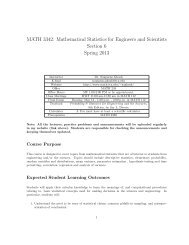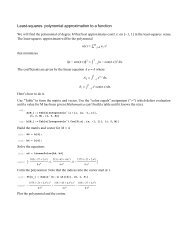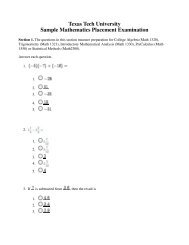QUANTUM MECHANICS AND NON-ABELIAN THETA FUNCTIONS ...
QUANTUM MECHANICS AND NON-ABELIAN THETA FUNCTIONS ...
QUANTUM MECHANICS AND NON-ABELIAN THETA FUNCTIONS ...
You also want an ePaper? Increase the reach of your titles
YUMPU automatically turns print PDFs into web optimized ePapers that Google loves.
<strong>QUANTUM</strong> <strong>MECHANICS</strong> <strong>AND</strong> GENERALIZED <strong>THETA</strong> <strong>FUNCTIONS</strong> 25given by a smooth field of 2-dimensional frames whose first vector is alwaystangent to the first interval.Unless otherwise specified, all the ribbon graphs and framed links used beloware taken with the “blackboard framing”, meaning that the ǫ-neighborhoodis in the plane of the paper. To simplify the exposition, we will callthem graphs, the framing being self-understood. From the frames that definethe orientation we draw only the first vector, being understood that thesecond vector is chosen so that the orientation agrees with the orientationof the plane of the paper in the usual convention of the x- and y-axes. Wewill be allowed to change locally the orientation of an edge, and we place acoupon (blank box) on the edge to separate the two orientations.Figure 4With this data at hand, let us quantize M g . The Hilbert space H r (Σ g ) isdefined by specifying a basis, the analogue of the theta series. For that weneed a rigid structure on the surface, which is a decomposition of the surfaceinto pairs of pants, together with seems that keep track of the twistings. Mapthe surface to the boundary of a handlebody such that the decompositioncircles bound disks in the handlebody. These disks cut the handlebodyinto balls. Consider the trivalent graph that is the core of the handlebody,whose vertices are these balls and whose edges correspond to the disks. Theframing of the edges should be parallel to the seams (more precisely, to theregion of the surface that lies between the seems). Pick any orientation ofthis graph, this orientation is relevant only in that it decides the sign of thebasis element.The vectors that form an orthonormal basis of H r (Σ g ) consist of all thepossible colorings of this framed oriented trivalent graph by V j ’s such thatat each vertex the indices satisfy the double inequality from the Clebsch-Gordan theorem (note that the double inequality is invariant under cyclicpermutations of m,n,p). For genus 3, and for the rigid structure in Figure 4a basis element is described in Figure 5. The inner product 〈·, ·〉 is definedso that these basis elements are orthonormal.This is a nice combinatorial description of the non-abelian theta functionsfor the Lie group SU(2), which unfortunately obscures their geometricproperties and the origin of the name.The matrix of the operator op(W γ,n ) associated to the Wilson lineW γ,n : A → tr V nhol γ (A)is computed as follows. Place the surface Σ g in standard position in the3-dimensional sphere so that it bounds a genus g handlebody on each side.Draw the curve γ on the surface, give it the framing parallel to the surface,



